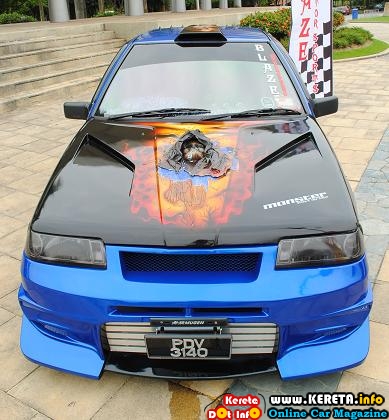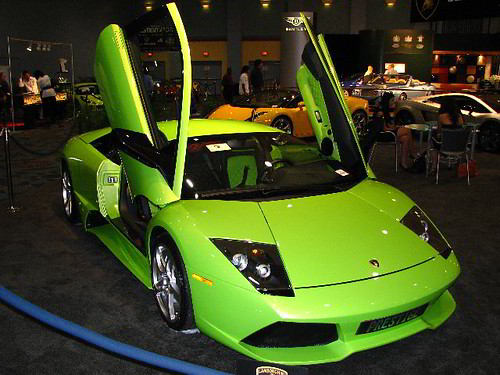|
|
|---|
Wednesday, December 16, 2009
Lithium and REE: WSJ - The Surge in Electric Cars TNR.v, CZX.v, WLC.v, LI.v, RM.v, CLQ.v, SQM, FMC, ROC, AVL.to, CCE.v, RES.v, QUC.v, HEV, AONE, NSANY
Posted by andre at 4:27 AMThe main message from teaser above - Fisker Karma Sunset is that you can chose to be Electric and do not have to slow down. Electric cars are here, they are Cool and ready to go. In order to be Green and stay Cool you do not have to sacrifice on design, power or experience "Range Anxiety", in couple of years down the road you will have plenty to chose from and they are coming on the roads already now. WSJ is taking the story to the investment mainstream and next idea will be how to capitalise on this Trend.
WSJ:
The Surge in Electric Cars
Why should anyone buy an electric car? That's going to be a critical question for the auto industry—and the best answer may not be "Because they're green."
WSJ Editor Joseph B. White takes Tesla Motors' all-electric 2010 Roadster for a drive and finds it's a sporty "green" car that packs a punch.
The Obama administration is committing billions of your money to the proposition that electric cars can become a meaningful segment in the U.S. market over the next few years. Faith in the future of such vehicles—which run all or in part on electricity straight from the grid—has waxed and waned many times over the past century, ever since the earliest electric cars were run off the American road by cheaper, more-powerful, more-versatile gasoline-fueled cars.
We're in one of the waxing phases now, and a big reason why is Tesla Motors Inc.
Based in Silicon Valley, Tesla has been offering its all-electric Roadsters for nearly two years and is still the only company selling highway-capable electric vehicles to consumers in volume. That will likely change next year when Nissan Motor Co. launches the Leaf, which is a full-electric, moderately priced family car. Other electric-car offerings are in the wings, including a model from Ford Motor Co. and cars from other startups, such as Coda Automotive.
WSJ Editor Joseph B. White takes Tesla Motors' all-electric 2010 Roadster for a drive and finds it's a sporty "green" car that packs a punch.
The Obama administration is committing billions of your money to the proposition that electric cars can become a meaningful segment in the U.S. market over the next few years. Faith in the future of such vehicles—which run all or in part on electricity straight from the grid—has waxed and waned many times over the past century, ever since the earliest electric cars were run off the American road by cheaper, more-powerful, more-versatile gasoline-fueled cars.
We're in one of the waxing phases now, and a big reason why is Tesla Motors Inc.
Based in Silicon Valley, Tesla has been offering its all-electric Roadsters for nearly two years and is still the only company selling highway-capable electric vehicles to consumers in volume. That will likely change next year when Nissan Motor Co. launches the Leaf, which is a full-electric, moderately priced family car. Other electric-car offerings are in the wings, including a model from Ford Motor Co. and cars from other startups, such as Coda Automotive.
Late in 2010, General Motors Co. plans to launch the Chevrolet Volt, a car the government-controlled auto maker is now promoting not as a "hybrid" but as an "electric vehicle with extended range capability." The Volt uses a small gasoline engine to recharge its batteries after the first 40 miles of all-electric travel.
Besides the Volt, there will be other partially electric cars hitting the market. Toyota Motor Corp. has said it will offer a "plug-in" version of its Prius hybrid by 2011. Owners will be able to recharge the car's batteries by plugging it into a wall socket or a recharging station, allowing it to go further on electric power alone. Conventional gas-electric hybrid cars use a combination of battery power and fossil fuels, which proponents say overcomes one of the big objections to all-electric vehicles: Namely, that if you run out of juice, you could be stranded.
Driving a Tesla Roadstar Sports model—which I did recently on an extended test drive—is like driving a plus-size go-kart. Some of the Tesla's basic underpinnings are adapted from a Lotus Elise sports car. The steering is stiff. The suspension is jittery on rough pavement. There's gobs of wind noise, and hitting a pothole causes the car's carbon-fiber composite body to shake, rattle and roll. But you can have enormous fun within the legal speed limit as you whoosh around unsuspecting Camry drivers, zapping from 40 to 60 miles per hour in two seconds while the startled victims eat your electric dust.
Tesla says it became profitable earlier this year, but it's being buoyed by a $465 million loan from the U.S. Department of Energy awarded to help develop a seven-passenger electric sedan. The company says it will be assembled in the U.S. and sell for about $49,900, after federal tax credits.
For now, Tesla's sole product is the $109,000 sticker-price Tesla Roadster, or $101,500 after federal tax credits. The Roadster Sport edition costs an extra $19,500. Some states offer additional consumer tax breaks for buying an electric car, topping out as much as $42,000 in Colorado. Still, the Tesla Roadster Sport is a product for an elite few.
The Leaf and the Volt are expected to be more moderately priced. Nissan says the Leaf will cost "in the range of other typical family sedans." The Volt is expected to carry a price tag somewhere in the $40,000 range—which makes this Chevy comparable on a price basis to a luxury car such as a BMW 3 Series sedan. In the world of electric cars, that's "affordable."
The Leaf and the Volt have so far been promoted mainly as environmentally correct, advanced-technology vehicles. The Volt has become a symbol of GM's effort at corporate revival following its bankruptcy earlier this year. The Leaf is a product of Nissan CEO Carlos Ghosn's determination to show that Nissan can be a clean-car-technology leader, driving out of rival Toyota Motor's shadow. In promoting the Leaf, Nissan has focused on the fact that it is a "zero emission" vehicle—a traditional environmental pitch.
The Tesla approach incorporates all the green jargon. But there's more. The 2010 Tesla Roadster Sport takes the original Tesla's high-performance drive system to the next level. The regular 2010 Roadster claims a 0-60 time of 3.9 seconds; the Sport will get to 60 mph 0.2 seconds faster. It also offers other refinements from the previous model. You get fast-looking forged wheels, a retro-modern push-button transmission with a "valet" mode that caps the car's top speed, preventing a parking attendant from rat-racing your baby while you are playing golf. (Some of you will know it as the "Ferris Bueller" switch.)
Oh yes, and there's now a glove box in the dashboard. It's very tiny. You could fit a pair of gloves in there.
Interior space in the Tesla Roadster Sport is adequate—if your frame of reference is a race car. I am of average weight and height, which is to say I'm a bit short and I could lose a few pounds. My driving partner was a colleague who could play Abe Lincoln if he grew a beard and bought a top hat. He fit in the car. Barely. I had plenty of headroom, but I would have to lose an inch or two of personal width to feel really comfortable.
These concerns became irrelevant when we got out on the 395 freeway in downtown Washington and hit the gas pedal—pardon me, the power pedal—to get around a slowpoke. I was used to driving a turbo-charged car that delivered a lot of boost in the 30-to-50 mph speed band. The Tesla put my Subaru WRX to shame.
Tari Cash, Tesla's Washington-area sales representative, says she has taken orders for 27 Roadsters. Some of the buyers are environmentally conscious. Most, she says, are car enthusiasts who want the New Thing.
The revelation of driving the Tesla is that electric cars make really fun toys. The Tesla uses electric motors and software instead of pistons and displacement to generate its super-torquey, race-car performance. But behind the wheel, you don't miss the gasoline.
Fast acceleration and big helpings of torque are characteristics of electric motors, which deliver all their pulling power right away. "Tesla proves electric cars are going to be a blast to drive," says IHS Global Insight analyst Aaron Bragman, who calls the Chevy Volt "a rocket ship." But he says it's important to temper the current enthusiasm for electric cars. Widespread adoption still confronts big obstacles, such as the lack of public recharging stations, the still-limited range compared with gasoline or diesel vehicles, and the cost. These issues could take another decade to resolve.
Still, promoting electric vehicles as hot rods could be the key to making "alternative" cars mainstream. For 30 years or more, environmentalists have called on us to eschew excess, slow down and leave a smaller footprint. Many Americans pay lip service to this ideal, but most don't choose to live it.
The Tesla turns the frugal environmentalist aesthetic on its head. Sure, it doesn't burn petroleum, and if plugged into a wind turbine or a nuclear plant, it would be a very low-carbon machine. But anyone who buys one will get the most satisfaction from smoking someone's doors off. The Tesla's message is that "green" technology can appeal to the id, not just the superego."
Subscribe to:
Post Comments (Atom)



















0 comments:
Post a Comment